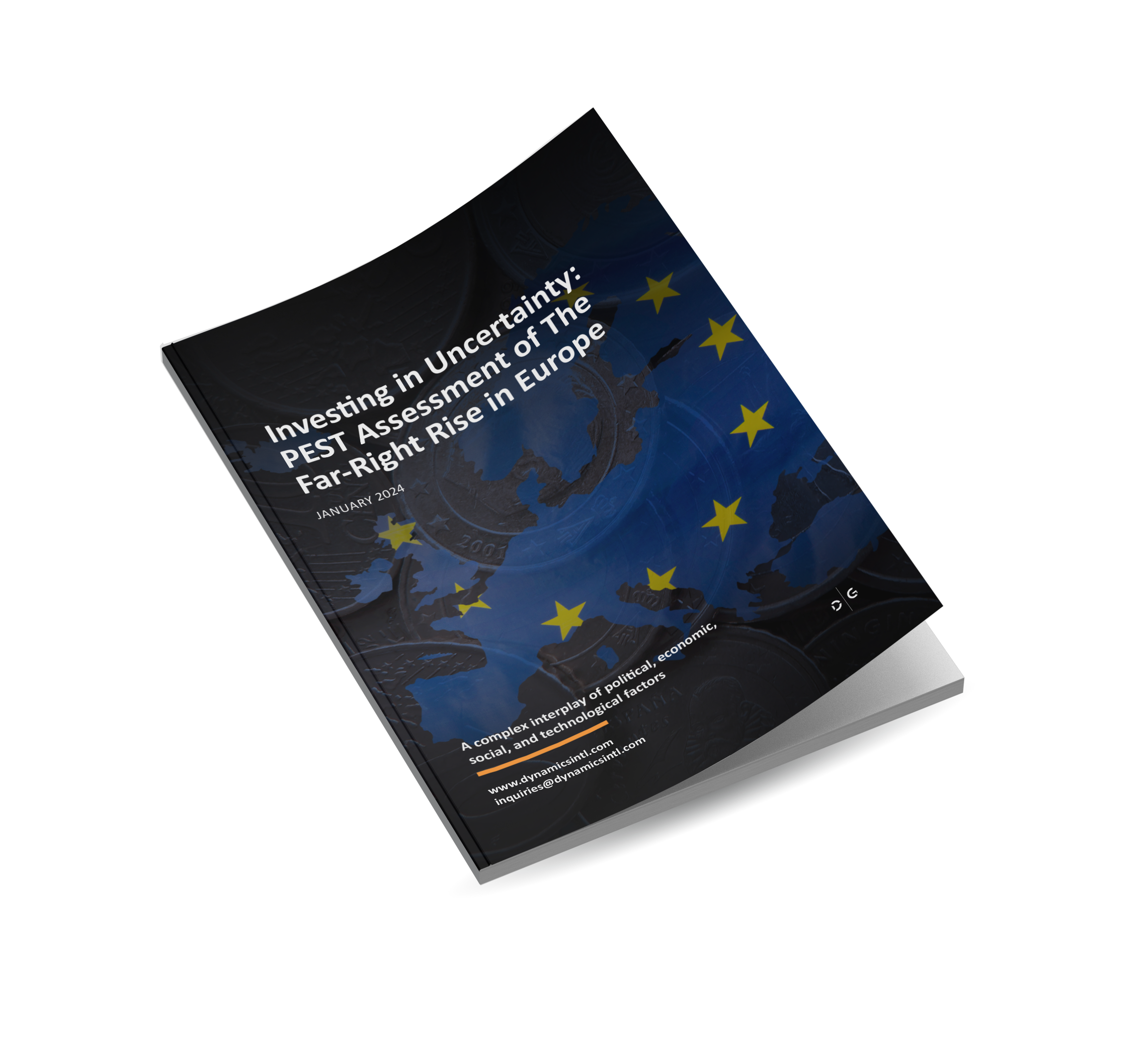The composition of the next European Parliament and its MEPs likely will determine the future of key political and policy plans. This Political, Economic, Social and Technological (PEST) assessment guides decision makers on how to understand and prepare for the potential risks and challenges.
In recent years, Europe has been witnessing a notable surge in the prominence and influence of far-right politics and the expected ramifications on the societal fabric. The war in Ukraine has further strengthened this rising trend, since it has highlighted the differences among individual EU member-states on crucial political, economic, and social matters, including EU foreign policy. As a result of these differences, with the primary focus on geopolitical matters, rather on the internal problems within the Union, plus the decline of the EU economy, have indirectly created fertile ground for the far-right political grow.
Although far-right politics date back to the late 19th and early 20th century, several noteworthy events have contributed to the current rise of this phenomenon. Staring from the 1960’s decline of mainstream leftist parties, the fall of the Communism in Easter Europe, 1989,[1] followed by the 1990s Balkan wars, have given way to more opposition to the European project, because of the continuous top-down policies implemented in the EU’s member-states and its neighborhood. Another significant period is the 2008 monetary crisis and the 2011-2012 Eurozone debt crisis, also referred to as the Third Great Depression[2] followed with economic challenges, such as austerity measures, unemployment, and income inequality. Such events have fueled public frustration and disillusionment with mainstream political parties contributing to the rise of far-right politics.
How can we help?
Intelligence Solutions
The combination of business, market and strategic intelligence ensures result-driven outcomes for our customers.
Risk management
Risk management through the responsibility of taking risk ownership while ensuring safety and security
Strategic Advisory
The first step in protecting your organization, assets and people is the identification of the risks and threats.
More current issues, such as transnational threats, the 2015 influx of migrants and refugees on mainland Europe, coupled with concerns about cultural identity and national sovereignty, have provided favorable opportunity for far-right politics, capitalizing on fears of cultural dilution, societal change, and perceived threats to national identity. Worth mentioning is that 2023 migration flows have risen to the same levels as in 2015 migration crisis.[3] In addition, the UK’s Brexit decision similarly mirrored far-right sentiments affecting the immigration and protecting national sovereignty. As a matter of fact, in the last two decades Europe has been witnessing a confluence of economically left-wing and culturally conservative policies, that has reshaped the political landscape and has manifested in the formation of coalitions across the political spectrum.[4]
This PEST analysis aims to dissect a range of factors contributing to this trend, providing insights into the challenges and opportunities posed by the rise of this phenomenon, and how investors should fine-tune their investment policies in this nuanced scenario considering the upcoming EU elections.[5] The assessment first forecasts the European parliament composition.
Key Findings:
- Political: The new EU Parliament will likely push the political focus inward, and further diminish the EU’s capacity for unanimous coordinated actions.
- Economic: The aftermath of the 2024 EU elections will significantly impact inflation and the investment climate in Europe, dependent on a combination of economic stability, currency stability, and interest rate policies.
- Social: The increased representation of far-right political parties likely will lead to social polarization and changes.
- Technological: The upcoming EU Parliament is poised to encounter obstacles and uncertainties influencing innovation, digital transformation, and cybersecurity.

ARTICLE | 24 PAGES






